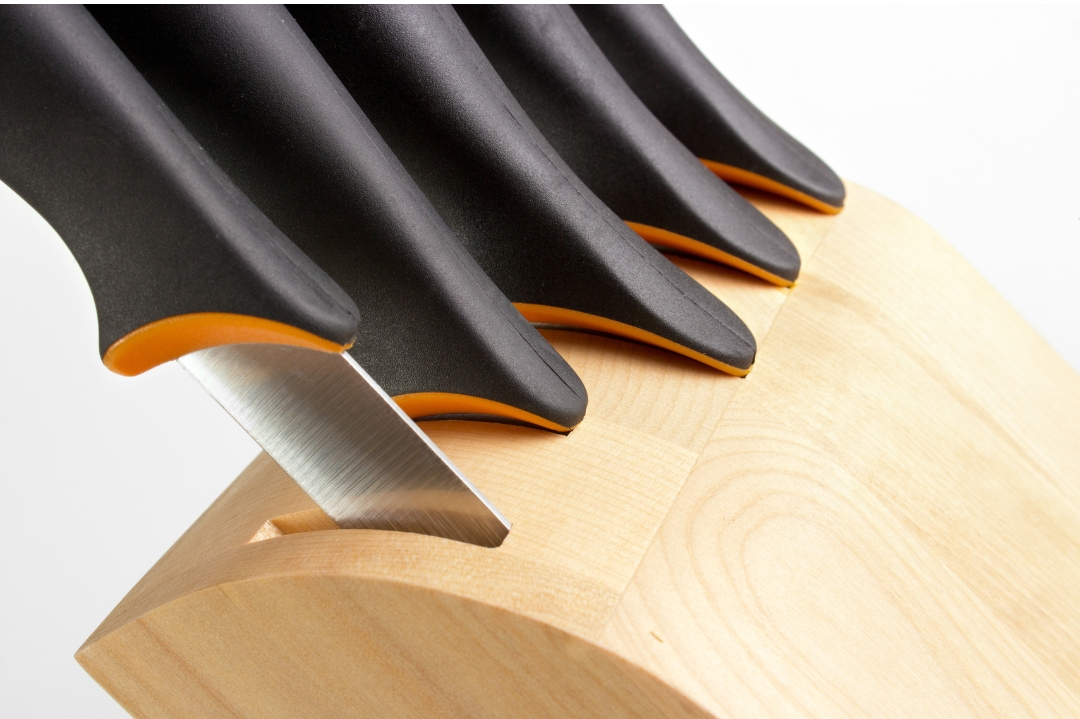
Combine excess moisture with a lack of air circulation and a biocompatible host and you have a recipe for mould. It’s not simply an insidious form of dirt that stands between you and a clean house, mould is also a potential health threat that triggers allergies, asthma, and other respiratory ailments.
There are common places in the home where mould rears its smelly head—we’ll review these below—but let’s focus on the unexpected. Your home could be harbouring mould in spots you don’t suspect. Sarah McAllister of Go Clean Co previously shared with us the food and grease filter at the bottom of our dishwashers needs monthly love to avoid starting a mould cycle after the final rinse.
Here are some logical but less-than-obvious mould havens that could be lurking within your four walls.

Under the fridge
Sticking with the kitchen, let’s brace ourselves and look under the refrigerator. First is the drip pan. Moisture? Check. Lack of air circulation? Check, particularly if there’s dust build-up. Biocompatible host? Absolutely. Even without food spillage (or the odd ice cube kicked under the fridge) dust itself is enough to feed Aspergillus, Cladosporium, and Penicillium, three of the most common household moulds.
The solution: Add the refrigerator drip pan to your annual deep clean. Wash the pan with a bleach and water mixture and use the same solution on the floor beneath the fridge. Sweep under the fridge frequently and avoid kicking those ice cubes.

Wooden knife blocks
Think of this the next time you’re chopping up veggies for dinner. Wooden knife blocks can be the perfect environment for mould and bacteria to grow if you’re not taking care of them properly. Before any knife finds its rightful home, it should be completely dry so the moisture doesn’t harbour in the block itself. Keep the knife block away from the sink, too. Splashes and spills can keep the bottom of the block damp, an ideal condition for spores to grow. Non-wooden knife blocks are also susceptible to mould if you’re putting damp knives back in the slots, but the risk isn’t as high as with porous wood.
The solution: Magnetic knife strips are a great way to avoid the wooden block entirely, but if that’s not an option, cleaning your current block will do. Use hot water and dishwashing soap along with a pipe cleaner to get into the crevices of the block, then let it air dry completely before putting the knives back in.

Chimneys
The ideal combustion process creates only carbon dioxide and water as by-products. Chances are your chimney won’t see ideal combustion, so there’s plenty for your household moulds to munch on. Add a leaky chimney cap, loose flashing, and the porous nature of fireplace bricks and there’s more than a casual chance for mould growth.
The solution: You’ll need to enlist the help of a professional chimney sweep to deal with any mould that’s already up there, but keeping up with the annual chimney sweep and inspection will help prevent it in the future. It’s not recommended to remove the mould yourself as getting up into the chimney can be tricky.

Potted plants
Readers with green thumbs know plants have widely varying needs when it comes to both soil composition and watering. Poorly draining soil and too much water can create the conditions for mould, since biocompatible organic fuel sources abound. In fact, a too-moist potted plant acts as a science experiment for mould development anywhere in your home. However, not all mould on potted plants is a cause for concern. The white mould that grows on the soil is typically harmless!
The solution: Know the watering needs of different plant species and re-pot older plants that have compacted soil. Or, opt for fake plants that require less (see: zero) upkeep.

Front-loading washers
High-efficiency front loaders keep your energy bills down, but they may be robbing you from truly clean clothes. The big rubber gasket that keeps soapy water in as you wash needs to dry out between uses. Without time to dry, left-behind lint is all mould needs to start its own cycle.
The solution: Wipe down the door and gasket at the end of laundry day. Leave the washer door ajar to allow thorough drying. If mould takes hold, run an empty wash cycle with chlorine bleach to kill the infestation.

Toothbrush caddy
The right caddy can keep a family’s brushes sorted and orderly. By their nature, though, brushes get wet. Add a little bit of toothpaste that didn’t get rinsed and there’s another bathroom mould factory, along with all the other wet, steamy contributors.
The solution: Choose a caddy that permits easy cleaning and add it to your bathroom checklist. Being generous with exhaust fan run times helps to reduce mould growth throughout this often humid location.

The most common locations for mould
Though the mix of moisture and food source adds up to mould in some strange places, there are also the usual suspects for fungal development. Review this list and add missing culprits to your regular home maintenance plan.
- Basements and crawl spaces
- Under sinks in bathrooms, laundry rooms, and kitchens
- Attics
- Beneath flooring, particularly after flooding or sewer backups
- Air conditioners and dehumidifiers
- Window sills and sashes
- Garages
Mould spores become airborne, so they can move easily around your house. While you can often deal with small mould outbreaks through your regular cleaning routines, call a mould removal professional when you encounter an area equal to or larger than one square metre. That’s about the size of a large bath towel, and it’s more than enough to spread spores throughout your home to other spots, both expected and unexpected.
Courtesy: realtor.ca
Posted by Infinity Admin on
Leave A Comment